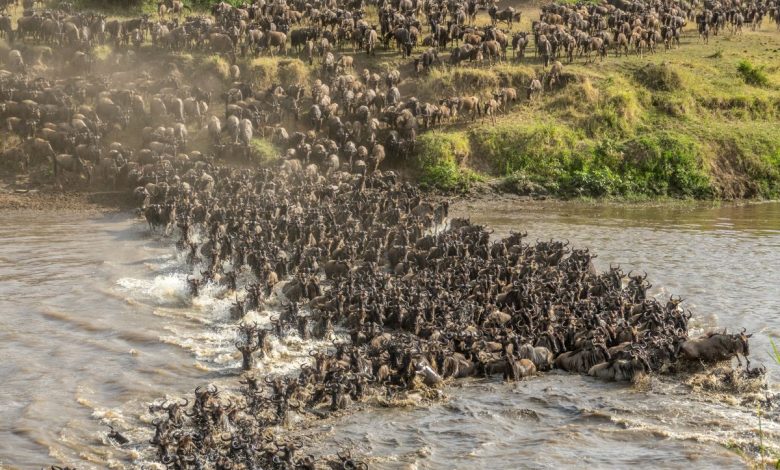Untold stories of Tanzania’s wild spaces

TANZANIA continues to stand out internationally for its exceptional tourism offerings, earning multiple prestigious awards.
Notably, the country won seven accolades at the 2024 World Travel Awards, including Africa’s Leading Destination, World’s Leading Safari Destination and Africa’s Leading Tourism Attraction for Mount Kilimanjaro.
Serengeti National Park was named the world’s best for six consecutive years (2019–2024) and ranked the world’s second-best safari destination by The Times of India.
Tanzania National Parks Authority (TANAPA) also received international recognition for service excellence from the European Society for Quality Research (ESQR) for the fifth year in a row, while the Tanzania Tourist Board was named Africa’s Best Tourism Board.
Tourism Minister Dr Pindi Chana, presenting the 2025/2026 budget, reported a 132.1 per cent rise in international tourists from 922,692 in 2021 to 2,141,895 in 2024. Domestic tourism also surged by 307.9 per cent, reaching 3,218,352 visitors.
Together, Tanzania welcomed 5,360,247 tourists in 2024, surpassing the CCM Manifesto target of 5 million.
The unique wonders of Serengeti, Saadani and Mikumi national parks are among the key attractions that make Tanzania shine on the global stage. Each park, managed by TANAPA, offers distinct natural features found nowhere else in the world.
Serengeti National Park
Serengeti National Park was established in 1951. It is the third largest, covering 14,763 square kilometres, preceded by Ruaha at 20,226 km², while Mwalimu Nyerere Park is the largest at 30,893 km².
Fort Ikoma: A historic landmark in Serengeti
Located within the Serengeti ecosystem, Fort Ikoma is a historic military fort originally built by German colonists in 1909 before World War I. After the war, it was taken over by the British during their colonial rule.
The name ‘Fort Ikoma’ combines the English word “fort” with the name of the local Ikoma people from the Mara Region, who once inhabited the area.
The fort was strategically established in a region rich in wildlife, fertile land and other resources valuable to colonial powers.
It served as the only military fortress during the European struggle for East Africa until three years after Tanganyika’s independence, when it was taken over by the Tanzania People’s Defence Force (JWTZ).
In 1997, JWTZ handed the site to TANAPA for conservation and tourism.
Fort Ikoma features a large stone castle with thick, enduring walls and a roof made from untreated indigenous wood resistant to insect damage.
Beneath the structure lies a tunnel used for military defence and the eastern wall bears bullet holes from past battles.
Built on elevated ground, the fort offered clear visibility of approaching enemies. Surrounding the main structure are smaller houses that once housed colonial officers and aides.
The Great Wildebeest Migration: Serengeti’s iconic spectacle
One of Serengeti National Park’s main attractions is the annual migration of over 1.5 million wildebeest, accompanied by zebras and antelopes, in search of food, water and breeding grounds.
The Acting Park Director and Head of Tourism, Mr Alex Choya, notes that this remarkable journey stretches over 1,000 kilometres between Tanzania and Kenya’s Masai Mara.
The migration peaks between June and July at Kogatende, near the Mara River, drawing thousands of tourists.
During this period, the park’s airstrips receive an average of 140 tourist flights daily.
Most female wildebeest return to Tanzania pregnant, having mated during the journey.
Zebras play a vital role as migration scouts, leading the herd and assessing the safety of river crossings.
Their advanced senses help detect predators and water conditions, though risks from lions, crocodiles and strong currents remain.
Mr Choya emphasises that Serengeti’s global fame also stems from its rich biodiversity and the presence of the Big Five—lion, rhino, elephant, buffalo and leopard.
The park has been named Africa’s best for six consecutive years, with conservation efforts focused on protecting its unique ecosystems for future generations.
Ecologists highlight the wildebeest’s ability to delay birth for safety and the newborns’ capacity to walk within hours remarkable adaptations that underscore the wonder and resilience of this natural phenomenon.
Saadani National Park: Where wilderness meets the sea
Established in 2005, Saadani National Park spans 1,062 square kilometres across the Coast and Tanga regions, covering Bagamoyo, Pangani and Handeni districts.
Formerly a game reserve, it is now one of Tanzania’s most unique parks, attracting both domestic and international tourists.
One of its standout features is the rare convergence of wildlife and beach where the Wami River meets the Indian Ocean.
Despite mixing, each water source retains its natural taste. Visitors can witness wildlife roaming the shoreline, making Saadani the only park in East Africa where the bush meets the beach.
A notable attraction is a miraculous image resembling the Virgin Mary that appeared on a baobab tree in 2019. Visible from 50 to 100 metres away, the figure has become a spiritual draw, enhancing the park’s appeal.
Turtle Conservation: A rare success
Saadani is also known for its thriving turtle nesting sites, particularly green turtles.
Conservation began in 2004 with just four nests and has since grown to 35–40 nests annually.
Green turtles, born at 40mm and growing up to two metres and 1 tonne, are among the largest and most venomous species.
Other turtle species in the region include those found in Mafia Island, Kenya and Seychelles, each with distinct characteristics.
Hamis Mwanakombo, known as ‘Mr Kasa,’ leads turtle conservation efforts.
He explains that turtles play a vital ecological role by feeding on seagrass where fish lay eggs, aiding marine biodiversity and supporting sustainable fishing.
Turtles live between 30 and 150 years and contribute significantly to tourism and environmental conservation.
However, their hatchlings face high mortality rates due to predators like monitor lizards and snakes. This natural cycle underscores their rarity and the importance of continued protection.
Saadani National Park stands out for its blend of biodiversity, marine life, spiritual significance and conservation success, making it a unique destination in Tanzania’s national park system.
Mikumi National Park
Mikumi National Park leads all Tanzanian parks in attracting domestic tourists, with 89,000 local visitors and 80,000 international tourists recorded over the past five years.
Like the Serengeti, Mikumi is home to four of the Big Five lion, buffalo, elephant and leopard.
According to park ecologist Peter Mathew, plans are underway to introduce rhinos, completing the Big Five lineup.





